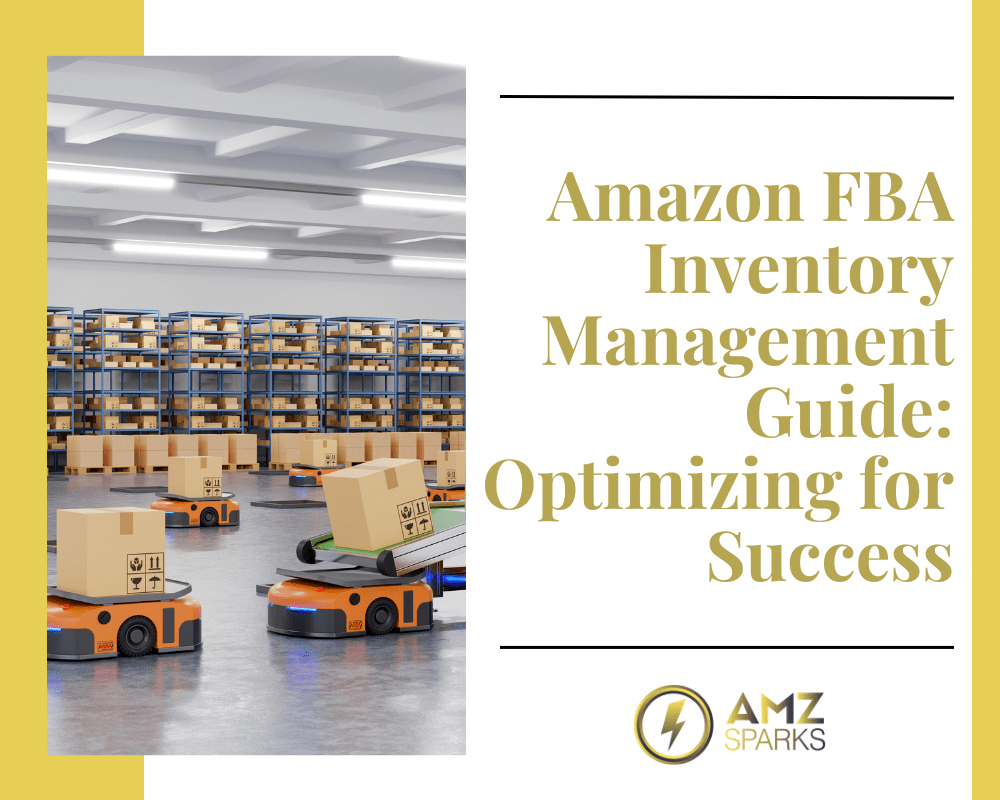The Crucial Role of Product Research in Succeeding on Amazon
Introduction In the vast landscape of online marketplaces, Amazon stands out as a juggernaut, offering sellers unprecedented opportunities. However, with great opportunities come great challenges. Navigating the competitive terrain of Amazon requires more than just listing a product—it demands strategic and meticulous Product Research on amazon. This article delves into the pivotal role amazon product research plays in achieving success on Amazon. How to do Product Research for Amazon For aspiring sellers venturing into the dynamic realm of Amazon, the key to success lies not just in listing products but in strategically choosing the right ones. How to do product research for amazon is the cornerstone of a thriving Amazon business, helping sellers identify lucrative opportunities, mitigate risks, and stay ahead in the competitive marketplace. In this comprehensive guide, we unravel the essential steps to conduct Amazon product research, empowering sellers with the knowledge to make informed decisions. Understanding the Amazon Marketplace Before delving into product research, it’s crucial to comprehend the Amazon marketplace. Recognize the categories that align with your interests, expertise, and market trends. Amazon’s diverse ecosystem encompasses various niches, each with its demand, competition, and potential for success. Tailoring your product research to align with your knowledge and preferences increases your chances of making informed decisions. Leveraging Amazon Tools for Insightful Research Amazon provides a range of tools to assist sellers in their product research endeavors. The Amazon Best Sellers list, for instance, showcases the top-performing products in each category, offering insights into trending items. The Amazon Keyword Tool aids in identifying relevant keywords, crucial for optimizing product listings and enhancing discoverability. Utilize the Amazon FBA product research (Fulfillment by Amazon) calculator to estimate potential fees, evaluate profitability, and make informed pricing decisions. Additionally, consider exploring Amazon’s market research tool, Amazon Market Intelligence (AMI), for in-depth insights into product demand, competition, and sales performance. Identifying Product Demand and Seasonality A successful Amazon product is one that meets a demand within the market. Leverage tools like Google Trends, Jungle Scout, or Helium 10 to gauge the popularity and seasonality of potential products. Products with consistent demand throughout the year are generally more stable and provide a reliable revenue stream. Examine the historical sales data of potential products to understand their performance over time. Evaluate how well products have sustained demand, especially during peak shopping seasons like holidays. This analysis aids in identifying products with enduring market appeal. Analyzing Competition and Differentiation Strategies Understanding the competitive landscape is crucial for product success on Amazon. Evaluate the number of competitors, their reviews, and pricing strategies. Products in saturated markets may require more strategic differentiation to stand out. Consider how you can offer a unique value proposition, whether through superior quality, innovative features, or a more compelling price point. This differentiation not only attracts customers but also reduces the intensity of competition, creating a niche for your product. Evaluating Profitability and Costs Profitability is the lifeblood of any business, and assessing potential profits is a critical aspect of product research. Calculate the estimated costs involved, including product sourcing, shipping, Amazon fees, and marketing expenses. Use tools like Jungle Scout’s Profitability Calculator to analyze potential profit margins. This helps in identifying products that align with your financial goals and ensure a healthy return on investment. Gathering Customer Feedback and Reviews Customer feedback provides invaluable insights into the strengths and weaknesses of potential products. Analyze customer reviews on similar products to understand user experiences, identify common pain points, and discover opportunities for improvement. Consider products with a mix of positive reviews and constructive criticism. This information guides product enhancements and allows you to launch a product that meets or exceeds customer expectations. Understanding Amazon’s Algorithm Before delving into the nuances of Amazon product research, it’s crucial to understand Amazon’s algorithm. This intricate system determines the visibility and ranking of products. Numerous factors, including sales velocity, customer reviews, and keyword relevance, contribute to a product’s standing in search results. Also Read: 10 Proven Marketing Strategy of Amazon to Boost Your Sales Competitor Analysis In a marketplace as dynamic as Amazon, understanding your competition is not just advantageous; it’s a prerequisite for success. Competitor analysis allows sellers to go beyond their own product listings and gain a comprehensive view of the entire market landscape. By studying competitor products, pricing strategies, and customer reviews, sellers can uncover opportunities for differentiation and refine their own approach to stand out in a crowded marketplace. Identifying Market Gaps and Opportunities for Differentiation Competitor analysis is not a mere exercise in observing rival products; it’s a strategic initiative to identify market gaps and capitalize on them. By scrutinizing competitor offerings, sellers can pinpoint areas where customer needs are not fully addressed or where competitors fall short. This presents an opportunity for sellers to tailor their products, enhance features, or adjust pricing to fill these gaps and attract a specific customer segment. Differentiation is key in a saturated marketplace. Competitor analysis provides the insights needed to create unique selling propositions that set products apart. Whether it’s through superior quality, innovative features, or a more compelling value proposition, understanding the competitive landscape allows sellers to carve out their niche and build a distinct brand identity. Tracking Competitor Pricing Strategies Pricing is a critical factor in the e-commerce ecosystem, and understanding how competitors price their products is vital. Competitor analysis helps sellers benchmark their pricing against similar products in the market. This knowledge enables sellers to adjust their pricing strategies to remain competitive, whether through offering more value or strategically positioning themselves as a premium option. Leveraging Customer Reviews for Improvement Competitor analysis extends beyond the tangible aspects of products and pricing; it encompasses the intangible realm of customer perception. Monitoring competitor customer reviews provides valuable insights into what customers appreciate and where competitors may be falling short. Sellers can use this information to refine their own product offerings, improve customer service, and address pain points that may not be adequately met by competitors. Strategic Positioning and Decision-Making Armed with the insights
The Crucial Role of Product Research in Succeeding on Amazon Read More »








